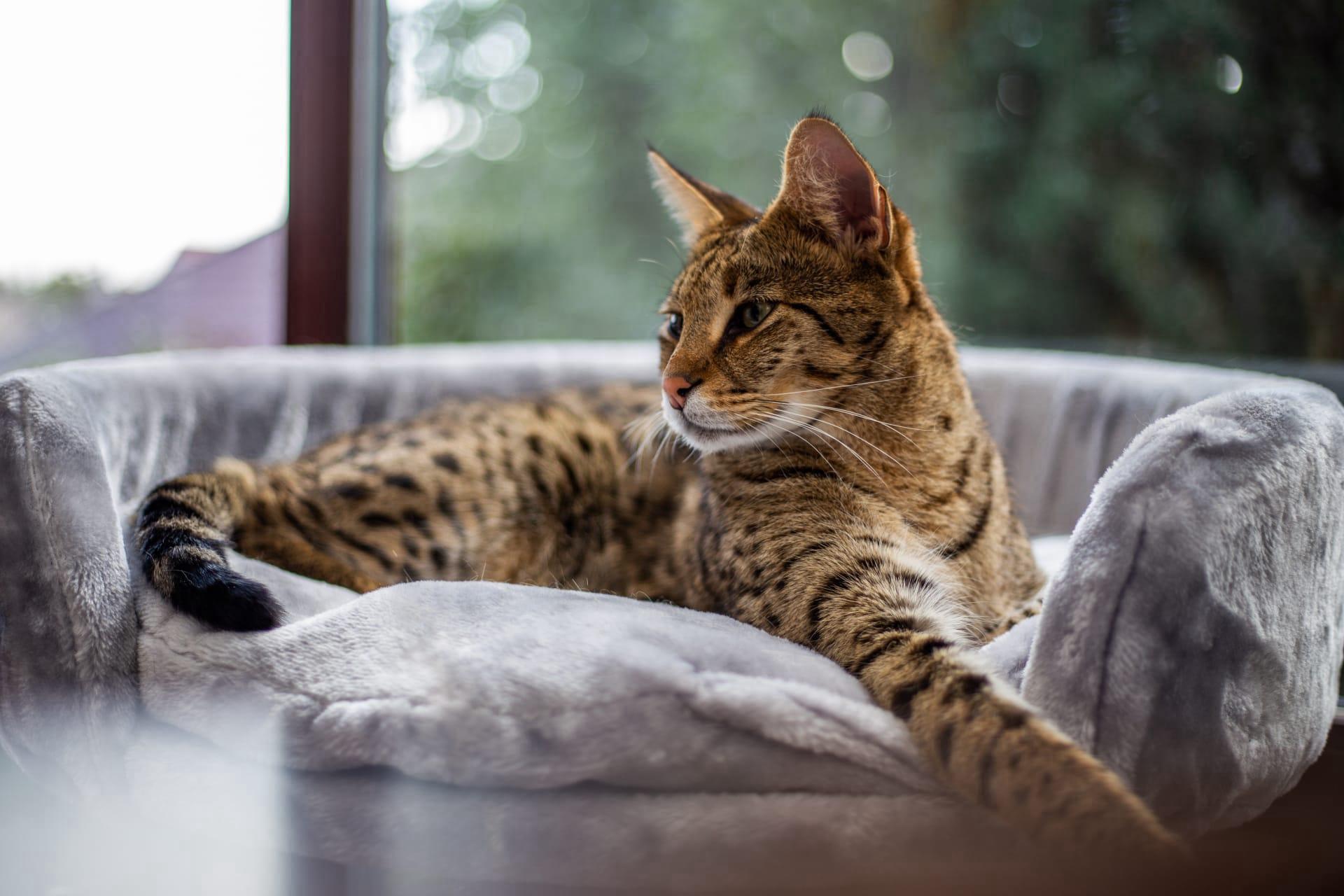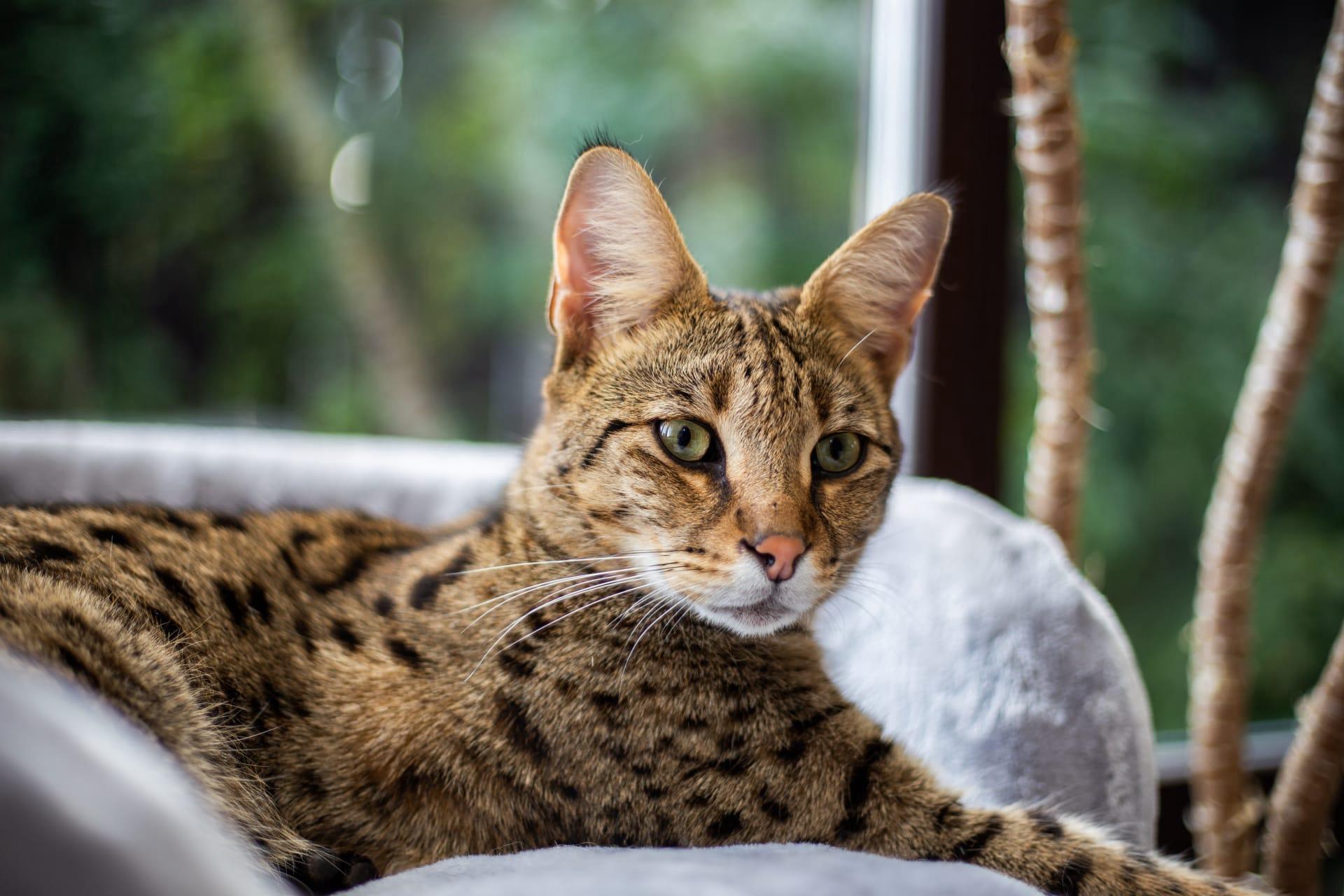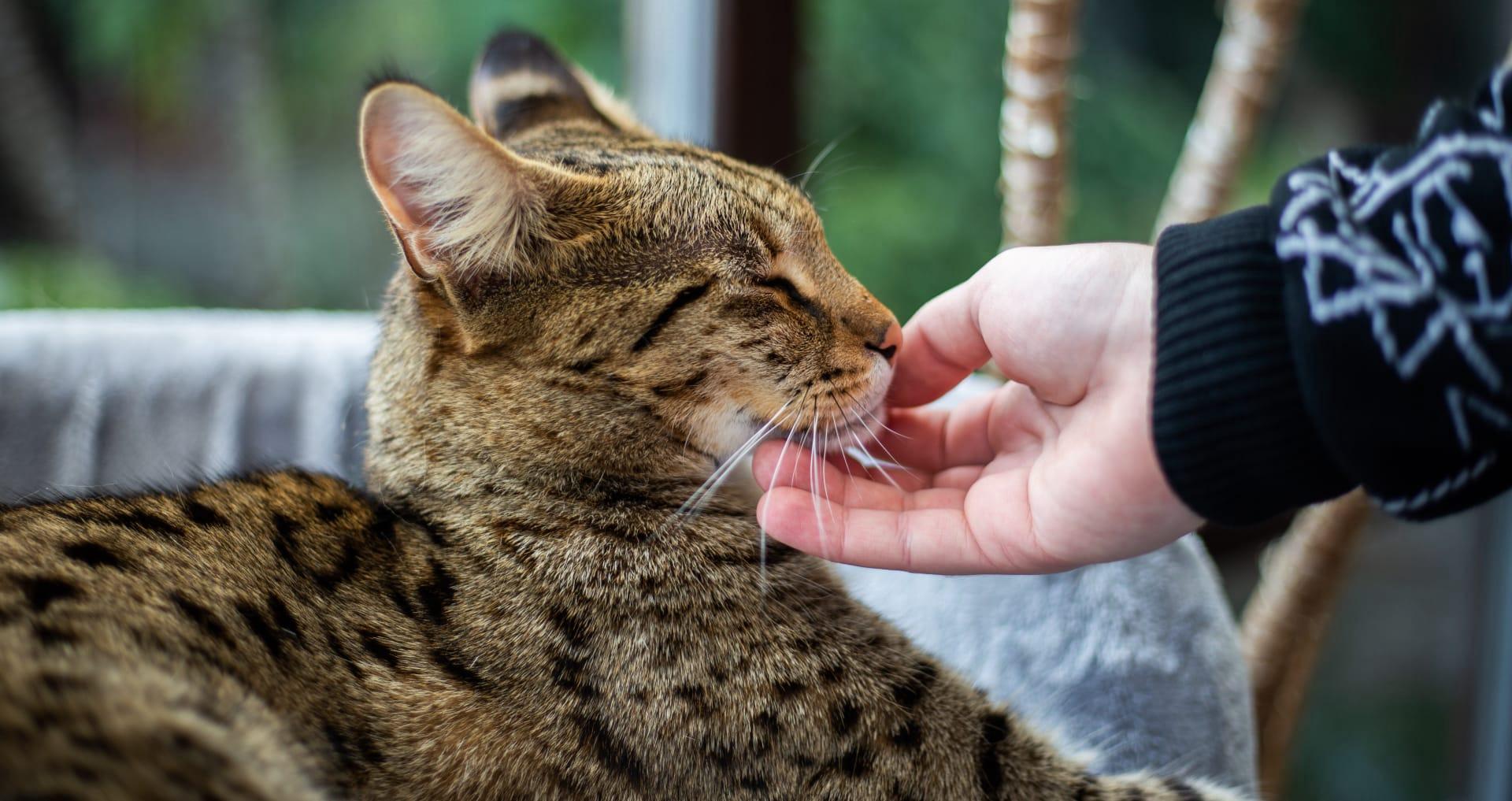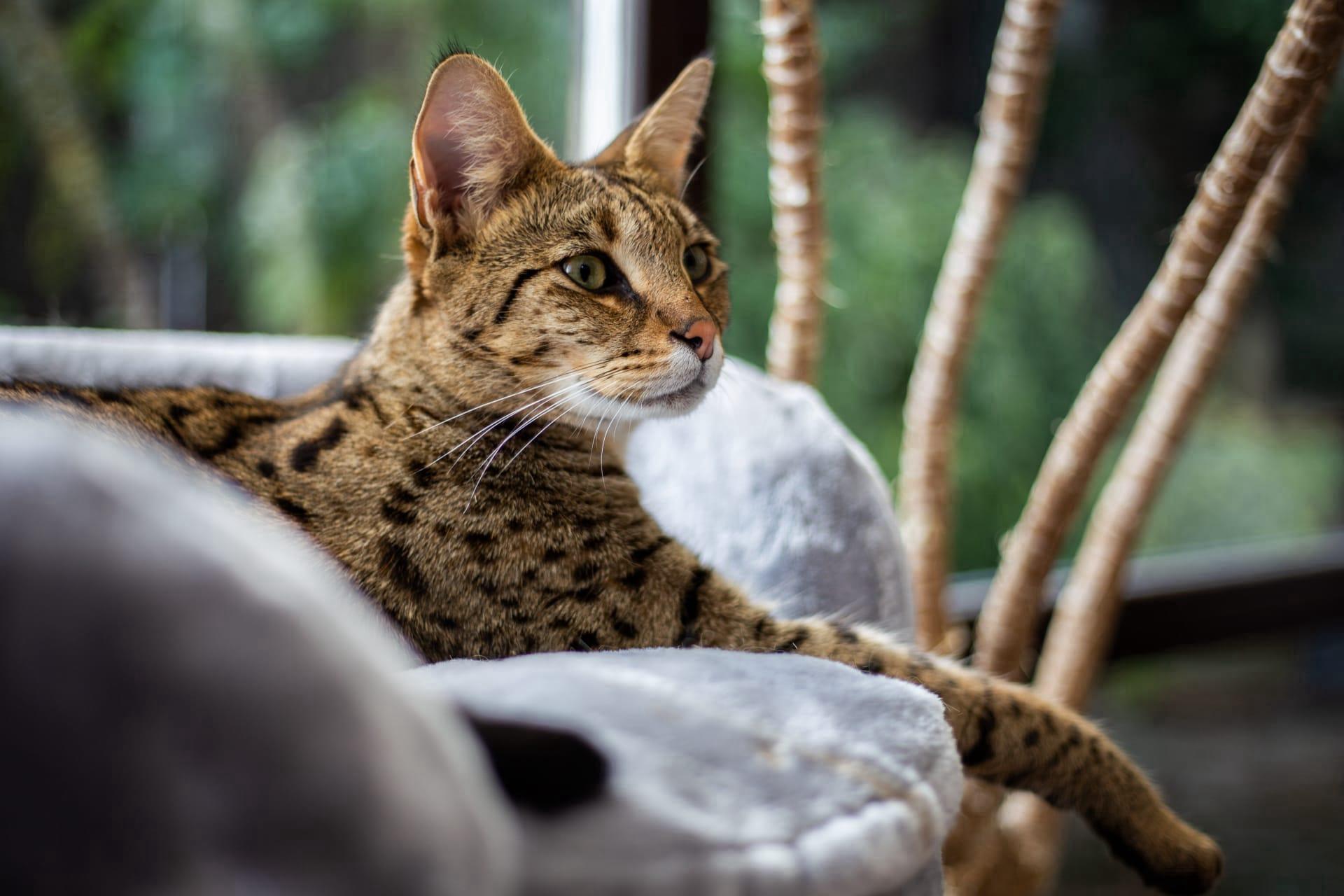Savannah Cat Characteristics
- Home /
- Mini Encyclopedia /
- Animal /
- Savannah Cat Characteristics
1
Savannah cats, a hybrid breed resulting from crossing a domestic cat with an African serval, boast a distinctive and striking appearance. They are known for their large, tall bodies, with adult males typically weighing between 12 to 25 pounds (5.4 to 11.3 kilograms) and standing about 14 to 17 inches (35.5 to 43.2 cm) at the shoulder. Females are generally smaller. These cats can live up to 12 to 20 years, which is a testament to their robust health and vitality. Their coats are marked with bold spots and stripes, reminiscent of their wild ancestry, and they possess long legs, large ears, and lean bodies that contribute to their elegant, wild look.
The most remarkable organ of the Savannah cat is its ears. Large, upright, and positioned on top of the head, Savannah cats' ears are not just a striking feature; they play a crucial role in their ability to communicate and hunt. These ears can swivel independently, allowing the cat to locate prey or the source of a sound with astonishing precision. This auditory capability is inherited from their serval ancestors, who rely on their acute hearing to detect prey in the tall grasses of the African savanna. The size and mobility of the Savannah cat's ears enhance their hearing, making them exceptional hunters and highly attentive pets.

2
Question: What is the most significant challenge in owning a Savannah cat?
Answer: The most significant challenge in owning a Savannah cat lies in their high energy levels and need for mental stimulation. These cats are incredibly active and require ample space to run, jump, and play. Owners need to invest time in interactive play sessions and provide enrichment activities to keep them mentally stimulated. Failure to do so can lead to behavioral issues, such as destructive behavior or aggression. Savannah cats are also known for their strong hunting instincts, which means they need secure outdoor spaces or supervised outdoor time to explore without risking escape or harm to local wildlife.

3
Savannah cats are characterized by their remarkable agility and athleticism. They are known to leap great distances and heights, often reaching up to 8 feet (2.4 meters) from a standing position. This agility is complemented by their love for climbing and exploring high places, making cat trees and shelves essential for a Savannah-friendly home. Their muscular build and long legs not only contribute to their ability to jump but also to their impressive speed when running.
When it comes to feeding, Savannah cats thrive on a diet that mimics what they would eat in the wild. High-quality, grain-free commercial cat food that is rich in protein suits them well, but many owners choose to supplement this with raw or cooked meats to satisfy their carnivorous appetite. It's crucial to ensure that their diet is balanced and meets all their nutritional needs, including taurine, a vital amino acid for cats. Regular consultations with a vet can help maintain their dietary health and overall well-being.

4
The ideal living environment for a Savannah cat combines ample indoor space with access to a secure outdoor area. These cats adapt well to indoor living, especially when their environment is enriched with toys, climbing structures, and places to explore. However, they also benefit from safe, supervised access to the outdoors where they can engage in natural behaviors like climbing, exploring, and hunting. A Savannah cat's environment should stimulate their mind and body, ensuring they remain healthy and content.
Savannah cats exhibit unique breeding characteristics. They are categorized into generations, from F1 to F5, indicating how closely related they are to their wild serval ancestors. F1 generations, being the closest to the serval, are often larger and exhibit more wild traits, while F5 and beyond are more domestic in size and temperament. Breeding Savannah cats requires knowledge of genetics and a commitment to health and temperament. It's a meticulous process that aims to preserve the breed's distinctive features while ensuring the cats are healthy, well-socialized, and fit for family life.

5
Book: "The Savannah Cat Book: An Informative Guide to Owning and Caring for Your Savannah" by Laura L. Sullivan. Published in the United States in 2015, this book offers a comprehensive overview of the Savannah cat breed, including their history, characteristics, and care requirements. Sullivan, a renowned cat breeder and enthusiast, provides readers with insights into the breed's temperament, dietary needs, and health care, making it an essential guide for current or prospective Savannah cat owners.
Book: "Savannah Cats: The Owners Guide to the Care and Training of Savannah Cats" by Suzanne Johnson. Released in the United Kingdom in 2017, Johnson's book delves into the unique aspects of raising a Savannah cat, from understanding their behavior and training needs to creating the perfect living environment for these energetic and intelligent animals. With a focus on fostering a strong, loving bond between owner and cat, this book is a valuable resource for anyone looking to enrich their knowledge on caring for a Savannah cat.